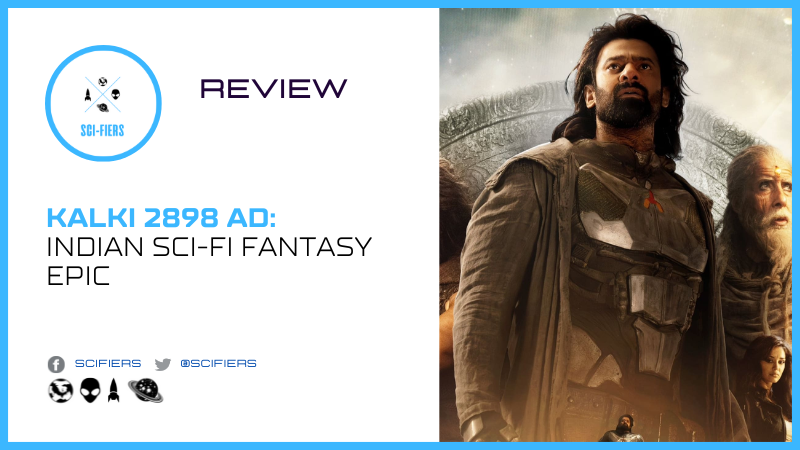In “Kalki 2898 AD,” director Nag Ashwin embarks on an ambitious cinematic journey, blending a century’s worth of science fiction and fantasy influences to create a film that interweaves elements from Fritz Lang’s “Metropolis” and Marvel Comics with the rich narrative of the Hindu epic “Mahabharata.” This film is poised to launch the Kalki Cinematic Universe, marking its debut alongside Kevin Costner’s “Horizon” saga in the U.S., highlighting a growing trend in expansive cinematic universes.
For those not well-versed in the ancient Kurukshetra War between the Kauravas and Pandavas—an epic struggle reminiscent of the Hatfields and McCoys but on a grander scale involving chariots and spears—it might be beneficial to familiarize oneself with Indian mythology prior to viewing “Kalki 2898 AD.” Understanding this background will enhance the viewing experience, particularly during the film’s visually impressive opening sequence, which depicts Lord Krishna cursing the warrior Ashwatthama to eternal life as punishment for his sins, with a chance for redemption through aiding the birth of Kalki, the final avatar of Vishnu.
Global audiences will likely recognize and appreciate the film’s numerous references to iconic science fiction and fantasy works, such as “Dune,” “The Handmaid’s Tale,” “Star Wars,” “Black Panther,” “Blade Runner,” “Mad Max,” and the Harry Potter series. Despite its detailed world-building and the slow development of parallel plotlines, which may occasionally lead to a slower pace and moments of confusion, the film compensates with its abundant and visually stunning action sequences. The performances from the lead actors, whether compelling or villainous, successfully capture and sustain the audience’s interest.
After portraying the ancient Kurukshetra War, “Kalki 2898 AD” jumps forward millennia to Kasi, a dystopian metropolis that is both strikingly familiar and intricately detailed. In this setting, the ruling elite, led by the menacing Supreme Yaskin (portrayed by Kamal Haasan), reside in opulence within the towering inverted pyramid known as the Complex, while the downtrodden masses live in poverty below. This stark divide between the privileged and the oppressed, echoing themes from “Metropolis,” adds depth to the narrative. Whether the film’s initial success will pave the way for its planned sequels remains to be seen.
Scifiers explores science fiction narratives that enliven our imagination and compel us to think about the “what-ifs” of creative world-building. It is on a mission to discuss ideas about sci-fi in its various forms that keep the genre in a state of continuous expansion.
facebook.com/scifiers | Instagram: @scifiers

